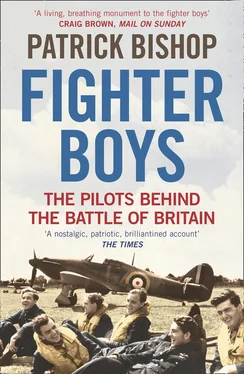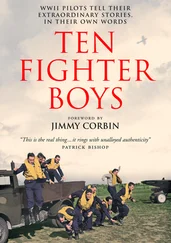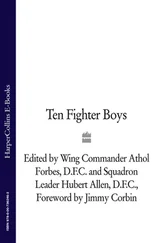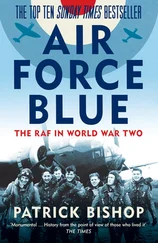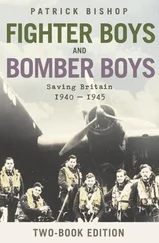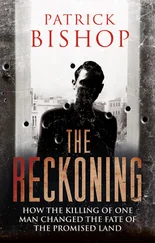FIGHTER BOYS
The Pilots Behind the Battle of Britain
Patrick Bishop
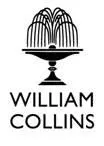
William Collins
An imprint of HarperCollins Publishers
1 London Bridge Street
London SE1 9GF
WilliamCollinsBooks.com
First published in Great Britain by HarperCollins Publishers 2003
Copyright © Patrick Bishop 2003, 2020
Cover illustration: Cover shows RAF fighter pilots from 32 Sqn. At Hawkinge aerodrome, July 1940 © Hulton Archive
Patrick Bishop asserts the moral right to be identified as the author of this work.
A catalogue record for this book is available from the British Library.
All rights reserved under International and Pan-American Copyright Conventions. By payment of the required fees, you have been granted the non-exclusive, non-transferable right to access and read the text of this e-book on-screen. No part of this text may be reproduced, transmitted, down-loaded, decompiled, reverse engineered, or stored in or introduced into any information storage and retrieval system, in any form or by any means, whether electronic or mechanical, now known or hereinafter invented, without the express written permission of HarperCollins.
Source ISBN: 9780006532040
Ebook Edition © 2020 ISBN: 9780007381180
Version: 2020-04-06
To Kelly and Bill
Cover
Title Page
Copyright
Dedication
List of Illustrations
Introduction
Preface
Map
Prologue: The White Hart
1 Sportsmen and Butchers
2 Fighters versus Bombers
3 ‘Free of Boundaries, Free of Gravity, Free of Ties’
4 The Fatal Step
5 Winter of Uncertainty
6 Return to the Western Front
7 The Battle of France
8 Dunkirk
9 Doing It
10 Before the Storm
11 The Channel Battle
12 The Hun
13 Hearth and Home
14 Attrition
15 Brotherhood
16 ‘The Day Had Been a Year’
17 Autumn Sunset
18 Rhubarbs and Circuses
Epilogue: The Last Note
Picture Section
Keep Reading
Notes and References
Index
About the Author
Praise for Fighter Boys
About the Publisher
Albert Ball ( Imperial War Museum )
Mick Mannock ( Imperial War Museum )
Hurricanes in ‘vic’ formation ( Imperial War Museum )
Spitfire in flight ( Popperfoto )
John ‘Killy’ Kilmartin ( Imperial War Museum )
Number 1 sqn in France ( Imperial War Museum )
Billy Drake ( Imperial War Museum )
Paul Richey ( Imperial War Museum )
The Ju 87 Stuka dive bomber ( Imperial War Museum )
Edgar ‘Cobber’ Kain ( Imperial War Museum )
Pete Brothers ( Imperial War Museum )
Al Deere ( Imperial War Museum )
Peter Townsend ( Imperial War Museum )
Robert Stanford Tuck ( Imperial War Museum )
Michael Crossley ( Imperial War Museum )
George Unwin and crew member ( Imperial War Museum )
Brian Lane and fellow pilots ( Imperial War Museum )
Me 109 ( Süddeutscher Verlag Bilderdienst )
‘Sailor’ Malan ( Hulton Archive )
Geoffrey Page
Me 110 ( Ullstein Bilderdienst )
Dornier 17 medium bomber ( Süddeutscher Verlag Bilderdienst )
Adolf Galland ( Imperial War Museum )
Heinkel 111s under fire ( Imperial War Museum )
Ground crews refuelling a Spitfire ( Hulton Archive )
Pilots from 610 sqn. at Hawkinge ( Hulton Archive )
Pilot with mask ( Hulton Archive )
Members of 66 sqn. ( Courtesy of Robin Appleford )
Rob, Robin, Pamela and Christine ( Courtesy of Robin Appleford )
Robin, Christine and Pamela ( Courtesy of Robin Appleford )
Moira and Sheila Macneal ( Courtesy of Mrs Lesley Kingcome )
Tony Bartley ( Imperial War Museum )
Denis Wissler ( Courtesy of Mrs Edith Kup )
Edith Heap ( Courtesy of Mrs Edith Kup )
Brian Kingcome ( Courtesy of Mrs Lesley Kingcome )
Heinkel III over Docklands ( Imperial War Museum )
Heinkel versus Spitfire ( Hulton Archive )
Paddy Barthropp
Paddy Finucane ( Imperial War Museum )
Johnny Kent and pilots ( Robert Hunt Library )
When I started writing this twenty-one years ago, there were still many Fighter Boys alive. As I write there are only two. All the rest have joined their comrades in the great squadron bar in the sky.
The book started off as a novel. I had just been terminated – with extreme delicacy – as foreign editor of the Daily Telegraph and restored to my old job of roving foreign correspondent. I was not sorry to leave executive life but wanted a break before going back on the road, and my editor agreed to a sabbatical. I headed off to Paris, rented a small flat in the rue du Cherche-Midi and spent my days writing and my evenings hanging out with other struggling literary types. I did not have to look hard for a story. I spent the first part of my childhood in Charing, Kent, before the family moved to Raynes Park in southwest London. The Battle of Britain was fought in the skies above these places, and the spirit of the event seemed somehow to live on in them, despite the fact that it had taken place twelve years before my birth. The narrative featured a romantic Polish fighter pilot, a roguish Anglo-Irish soldier-adventurer and a love triangle. No one was interested in the novel, but Michael Fishwick at HarperCollins saw something he liked and suggested that I forget fiction and concentrate on fact. It was a good idea and the timing was perfect.
The Battle of Britain comes and goes in the national memory, and this was one of the dim periods. No book, film or TV show that captured the public imagination had appeared for a while. Plenty had been written, but there seemed to me to be something missing from the story. It was the pilots themselves. Yes, a number of autobiographies had appeared in the years after the war, but they were products of their time, and not much more revealing of the inner life of the authors than a Boy’s Own Paper yarn. I wanted to know who they really were and why they did what they did. These questions were answered brilliantly in a book that appeared at about the same time as mine. Geoffrey Wellum was one of the many pilots I interviewed, and when he told me that he had written his own book, I left him to speak for himself. The result was First Light , which will endure as one of the great accounts of the experience of war in the air.
Geoffrey’s book brought the story back to what for me was the essential. The literature of the Battle of the preceding years had boiled the business down to a matter of machines, technology, organisation, strategic and tactical decision-making and the like. This approach tended to diminish the role of the pilots, which I saw as being crucial. The Battle of France had shown that you could have all the material advantages and still lose. What mattered was the character, motivations and morale of the participants.
Читать дальше
